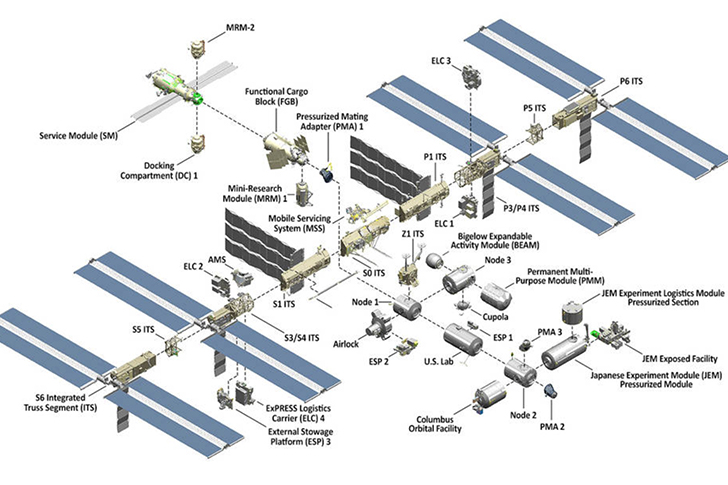The International Space Station and What It Contributes to Mankinds Future in Space

The International Space Station is a science laboratory that is dedicated to helping humans learn how to live and thrive in space. But, it isn’t just a typical science laboratory. It’s 240 miles above Earth’s surface, and it goes as fast as 17,500 miles an hour. Moreover, this unique science laboratory gives us an idea of how the space environment would affect the human body and biology as a whole. There are several onboard experiments that were conducted on the ISS, and all of them aim to understand how the cosmos works.
Rotating crews have occupied the ISS since November of 2000. Through the years, space professionals, spacefarers, and even tourists have made the journey to the ISS. Interestingly, the space station is a long-term investment made by several space agencies. It’s the work of five space agencies, NASA, the European Space Agency, Roscosmos, the Canadian Space Agency, and the Japanese Aerospace Exploration Agency. Here’s how the ISS came to be and how it has grown over the past couple of decades.

The International Space Station: How It Was Conceived
The International Space Station was conceived through a single idea. It was in the 1980s when former President Ronald Reagan directed NASA to execute and build an international space station. The plan was supposed to be executed within the decade, and Regan said it would bring massive contributions to scientific research.
Then, the United States pushed through with the plan by partnering with Japan and Europe. It later invited Russia in 1993 because Russia had extensive knowledge and experience in operating orbital space stations. By 1998, all of the five space agencies that we’ve mentioned were already on board and locked into executing the project. You could say that all of the countries and space agencies involved deserve credit for uniting around one common scientific goal!
Building the International Space Station
The ISS’ initial blueprints consisted of a series of linked and cylindrical modules. The modules were designed to be solar-powered and cooled by loops that would radiate heat. The blueprints divided the station into two larger segments: the U.S. segment, which includes many contributions from several countries, and the Russian Orbital Segment, which was to be operated by Russia alone.
The construction then began in November 1998. Best believe that everyone was extra careful in the process as this project was a monumental investment in mankind’s knowledge of space. The first stage of construction was delivering the first piece of the ISS structure. The first piece was named Zarya Control Module, and it was delivered into orbit by a Proton rocket.
Two weeks later, the space shuttle Endeavour arrived with astronauts, and it successfully delivered one of the major components of the U.S. module. The U.S. named the module “Unity,” and it connected the station’s U.S. segment with the Russian segment.
The International Space Station Today
The International Space Station spans the area of one football field. It hosts living spaces, laboratories, and docking ports. Moreover, both the Russian and U.S. segments are able to generate power and electricity for all the amenities inside the ISS. Astronauts are free to move between the segments.
The first human crew to inhabit the International Space Station arrived on November 2, 2000. The crew included NASA astronaut Bill Shepherd, cosmonaut Sergei Krikalev, and Yuri Gidzenko. Today, the station is typically occupied and inhabited by at least three astronauts. The number can change depending on the project, as it can handle as many as six. Construction is still ongoing today, with the latest plans involving Russia’s endeavor to deliver a new science module to the station.
Why the International Space Station Matters?
The International Space Station brings a ton of knowledge for humankind that will help them in their plans for space exploration. Before anything else, space poses several challenges, including humans. The International Space Station is currently the best place to practice living in the unfamiliar conditions of space. Without a doubt, it allows us to understand how space affects human physiology.
Survival in space involves successfully dealing with microgravity. It’s also a training ground for humans to adjust to living conditions outside of Earth. It can be pretty interesting to adapt to an environment where you can see at least 16 sunrises and sunsets. Additionally, it helps humans figure out how to get a good night’s sleep amidst these alien conditions.
The International Space Station contributes to scientific research and knowledge about space. There were several experiments and studies that were conducted inside the station. However, some experiments are usually conducted outside the station. Without a doubt, the space station deserves a ton of credit as it brings an exhaustive and comprehensive understanding of how humans adjust to life in space.
Photo Sources:
Cover – NASA via Science
Photo #1 – NASA
Photo #2 – NASA / Tojo
Photo #3 – ESA
Photo #4 – Twitter / Chris B – NSF




Recent Comments